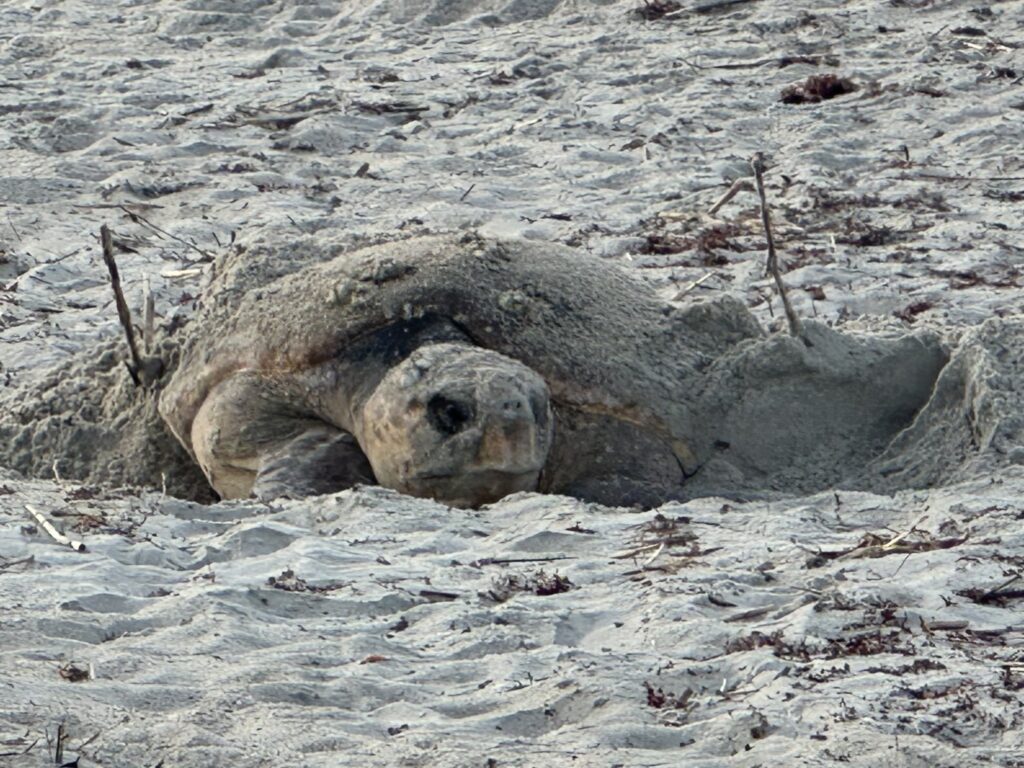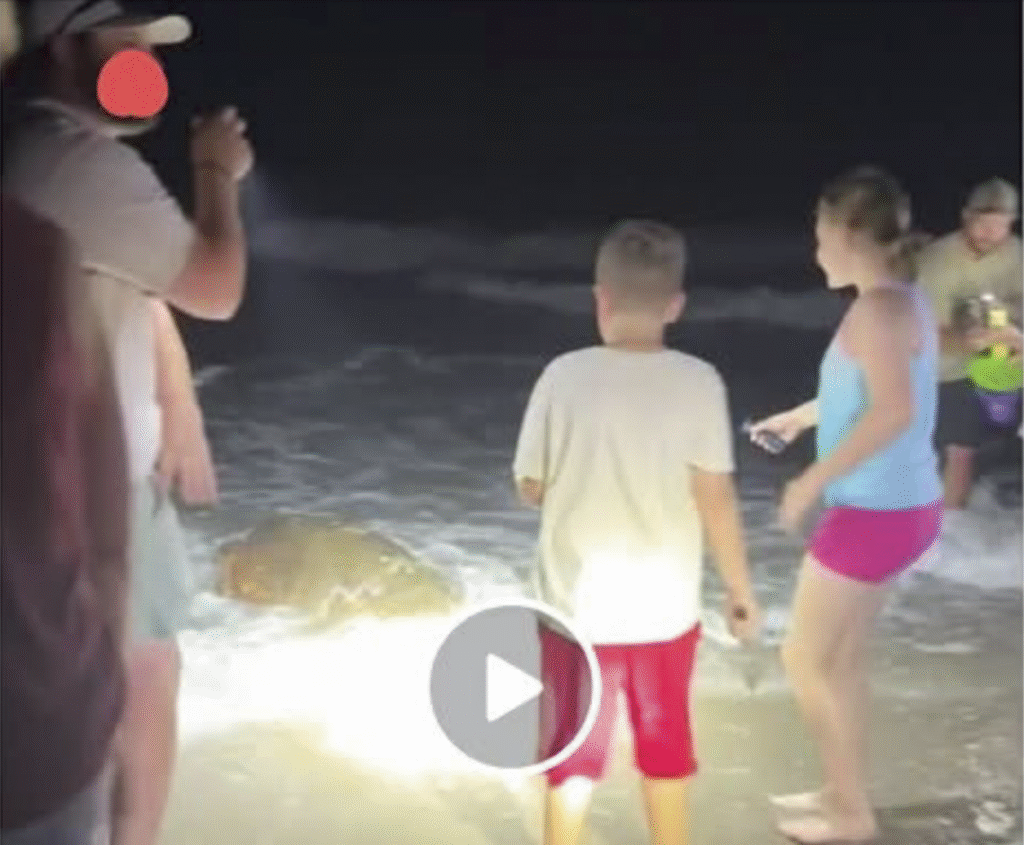
As beach lovers, a chance interaction with a sea turtle is a treasured experience, and we all get excited and naturally want to get closer to these majestic creatures. But as we have opportunities to get up close with a sea turtle, it’s important to understand the protections in place for them. So far this season, we have seen evidence of several public vs. turtle interactions on our beach which cross the line of allowable turtle interaction.
Sea Turtles Are A Threatened Species
If you follow our site and Facebook page, you likely already know a bit about sea turtles and what Caswell Beach Turtle Watch is charged with in protecting its sea turtles. But do you know that all sea turtles are either endangered or threatened, depending upon their species? We wanted to share a bit more background on how sea turtle protection works and how the federal and state government govern and oversee this program. With your knowledge and help, we can do more to make sure our sea turtles are safe and treated well.
The U.S. Endangered Species Act was enacted in 1973, and protects a broad range of fish, wildlife and plants. Specific to sea turtles, it defines the scope, authorities and specific actions allowed, and more importantly, actions that are illegal. TAKE is a term that has a specific definition when it comes to sea turtles given they are endanged and threatened species.
U.S. Federal Endangered Species Act
TAKE as defined under the ESA means
“to harass, harm, pursue, hunt, shoot, wound, kill, trap, capture,
or collect, or to attempt to engage in any such conduct.”
What does this mean? It means that ANY attempt to interact with a turtle is considered TAKE. If you see a mama sea turtle crawling on the beach or attempting to nest, a minimum distance of 20 feet (or more) should be maintained at all times. If the turtle is reacting to anyone close to them, then they are too close. Attempting to use lights or cameras are harrassment and also considered TAKE, and therefore unlawful. A harrassed sea turtle that retreats to the sea without laying her eggs risks losing her entire clutch of eggs, which can be upwards of 120 eggs. Remember the mission of the ESA is to grow population, not reduce.
TAKE also means anything to do with the turtle, on land, in the water, or in its lifecyle. That means turtle nests, nest environments, eggs, hatchlings – you get the idea. Please help us spread the word.

Now, just for the record, the work that Caswell Beach Turtle Watch does when it works with turtles is defined as TAKE, as we are engaging with the turtles and their “natural” environment. The same would be true for sea turtle rescue, hospitals and rehabilitation. But these organizations and activities are permitted under the ESA as authorized parties. Caswell Beach Turtle Watch works under the North Carolina Wildlife Resources Commission and receives the training and resulting permit badge to oversee all turtle management for Caswell Beach. Each beach has only one assigned group to cover turtle protection operations. While there are many beach lovers who are educated and passionate about sea turtles, only the NCWRC trained and appointed permittees are allowed by law to perform protection work.
The subject of TAKE and its definition has been a large part of NCWRC’s training focus for this upcoming season, aiming to increase awareness across all beaches. Have questions? We are happy to educate. Catch us at our booth at OKI farmers market, our merchandise sales at CWB Town Hall (Tues & Fri, 9-12), or on the beach. Looking forward to a great season focused on growing sea turtle populations worldwide!
**This conservation work for protected sea turtles on Caswell Beach is authorized by the NC Wildlife Resources Commission (ES Permit 25ST03).
Please consider donating to our efforts as we build up our necessary resources for the season.
You can donate at Caswell Beach Turtle Watch Donations.
